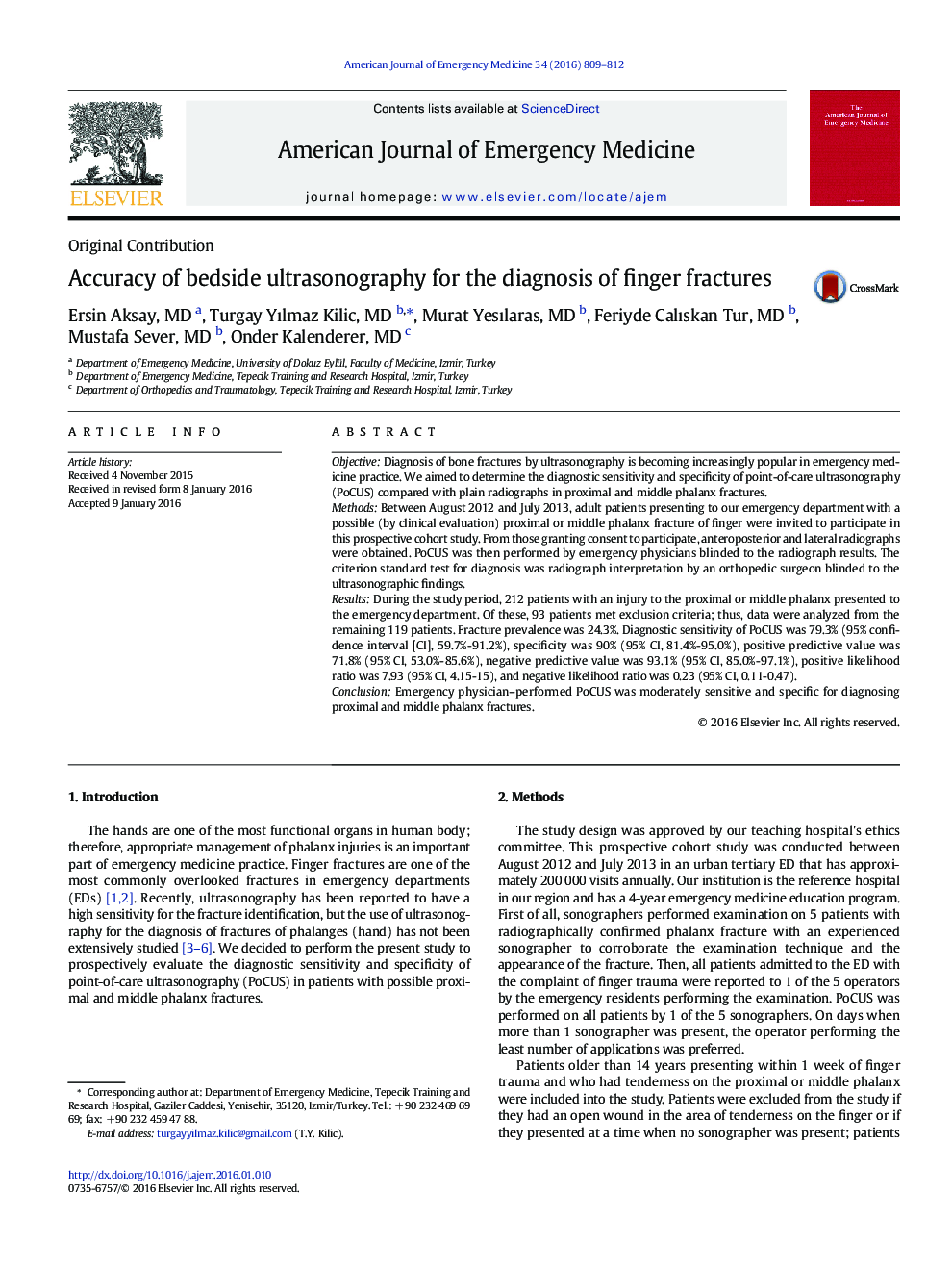| Article ID | Journal | Published Year | Pages | File Type |
|---|---|---|---|---|
| 3223292 | The American Journal of Emergency Medicine | 2016 | 4 Pages |
ObjectiveDiagnosis of bone fractures by ultrasonography is becoming increasingly popular in emergency medicine practice. We aimed to determine the diagnostic sensitivity and specificity of point-of-care ultrasonography (PoCUS) compared with plain radiographs in proximal and middle phalanx fractures.MethodsBetween August 2012 and July 2013, adult patients presenting to our emergency department with a possible (by clinical evaluation) proximal or middle phalanx fracture of finger were invited to participate in this prospective cohort study. From those granting consent to participate, anteroposterior and lateral radiographs were obtained. PoCUS was then performed by emergency physicians blinded to the radiograph results. The criterion standard test for diagnosis was radiograph interpretation by an orthopedic surgeon blinded to the ultrasonographic findings.ResultsDuring the study period, 212 patients with an injury to the proximal or middle phalanx presented to the emergency department. Of these, 93 patients met exclusion criteria; thus, data were analyzed from the remaining 119 patients. Fracture prevalence was 24.3%. Diagnostic sensitivity of PoCUS was 79.3% (95% confidence interval [CI], 59.7%-91.2%), specificity was 90% (95% CI, 81.4%-95.0%), positive predictive value was 71.8% (95% CI, 53.0%-85.6%), negative predictive value was 93.1% (95% CI, 85.0%-97.1%), positive likelihood ratio was 7.93 (95% CI, 4.15-15), and negative likelihood ratio was 0.23 (95% CI, 0.11-0.47).ConclusionEmergency physician–performed PoCUS was moderately sensitive and specific for diagnosing proximal and middle phalanx fractures.
